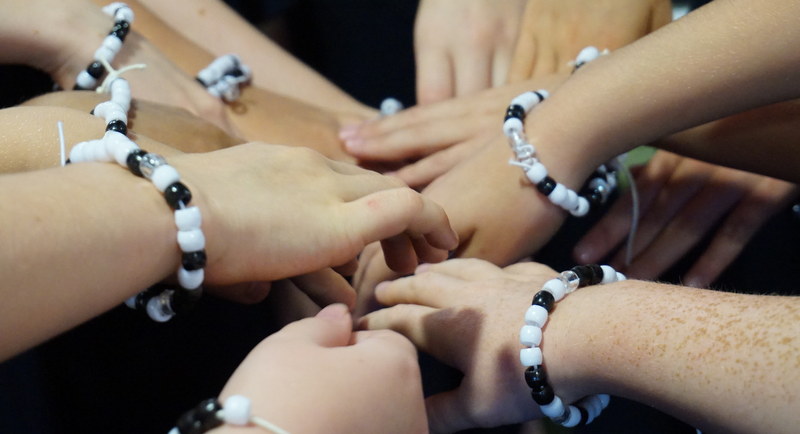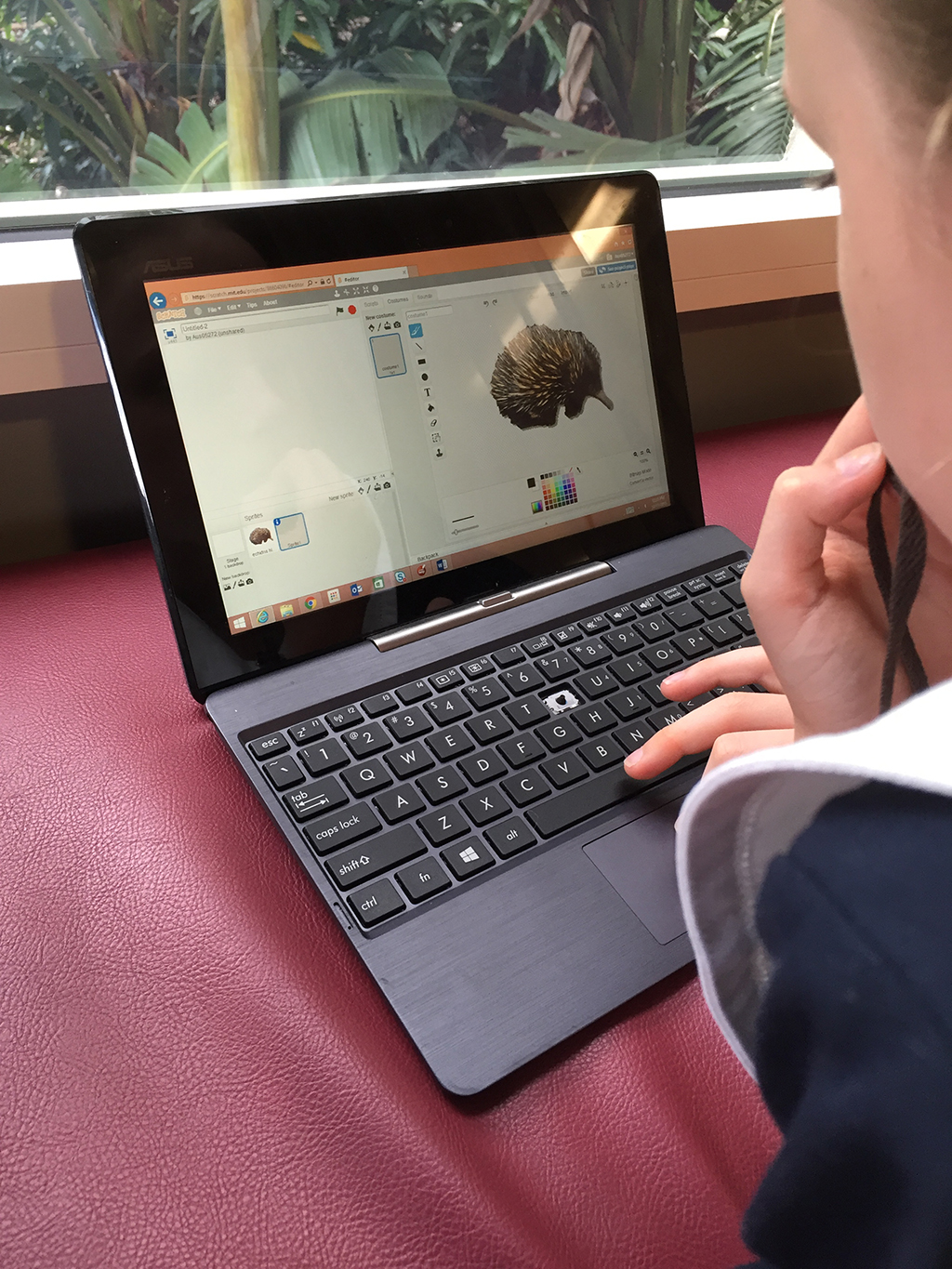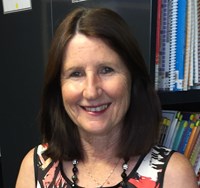Issue 102
Term 3 2017
Tinkering, making and building in the school library
Jackie Child shares ideas for engaging students with computational thinking — and resources to make it as easy as possible for library staff.
Computers touch our lives in so many ways, from movies to medicine, education to entertainment, gaming to government, construction to commerce. Computers and digital technology are at the centre of every industry and code is the language of computers, so it makes sense that we give our children the opportunity to write code. After all, it was just a few centuries ago when only the elite and religious could scribe for others so they could communicate through writing and reading. With computers dominating nearly every aspect of our lives, our students need to be able to create and instruct these digital technologies, hence the desire to teach coding.
At St Aidan’s Anglican Girls’ School, the library program is one way to interest our students in computational thinking and coding. Library lessons are scheduled once a week for students from Foundation to Year 6. The younger students mostly work as a class group whereas students in years 3 to 6 work in three weekly rotational groups of Recreational Reading, Inquiry Learning and ‘Technology + X’. The groups enjoy their names: Tinkers, Makers and Builders, which derived from our Junior Library Makerspace. Few resources need to be purchased and more one-on-one interaction happens within smaller groups. Each week one group, Technology + X, is engaged in computational thinking and coding activities.
Megan Daley of Children’s Books Daily and I job share and we have found storytelling to be a key in making coding accessible to young people. We have resourced our library with stories that can connect the idea of coding in meaningful and real-life ways. Books to inspire coding and robotics can be found on my blog, TinkeringChild.com.

‘Code is the 21st-century literacy, and the need for people to speak the ABCs of programming is imminent. Our world is increasingly run by software, and we need more diversity in the people who are building it.’ — Linda Liukas
Linda Liukas is the author of Hello Ruby: Adventures in Coding. This book provides a useful way to introduce coding to younger students. You can take one chapter at a time and follow up with activities at the back of the book or on the website. These activities are all unplugged and cover many aspects of the English and mathematics curriculums such as sequencing, algorithms, patterns, and structures. They also cover aspects in the digital technologies curriculum like decomposition, debugging, Booleans, abstraction, and computational thinking.
As an example, early in the story Ruby needs correct instructions, as computers do (algorithms), and after enjoying Ruby’s antics, our students sequenced instructions for Ruby to complete tasks such as packing a school bag and feeding a pet. Some students role-played the task and others played charades, all inspired from the story. Throughout the story links were made to using coding apps on the iPads. For example, Kodable tied in very well with clues and completing a quest, just like the Fuzz Family who land on Smeeborg and need help navigating the technomazes.
Coding is being referred to as the 21st-century literacy and, as teacher librarians, literacy is our passion and expertise. At St Aidan’s we have been running a Robotics and Coding Club within our makerspace for the last two years. Our students begin with ‘unplugged’ activities — many great examples can be found on CSUnplugged — moving onto programming robots like Bee Bot and Pro Bot. We have iPads with many coding apps, and games we have made to develop computational-thinking skills. As the students progress, they have fun coding programs for other robots like WeDo, BB8, and Mindstorms NXTs and EV3s.
Giving our students the language to use is crucial, so we have used the interactive book Lift-the-flap computers and coding by Rosie Dickins and added code-related quotes to our ‘window of words’. This book is fun, challenging, and has plenty of tips and extra resources online.
Coding develops understanding and many skills that students can use in everyday life; for example, that learning is a process and not a product, computational thinking, breaking down problems into smaller pieces, persistence and perseverance, risk taking, determination, and, of course, collaboration and sharing. It makes learning meaningful.

Students write code messages using beads.
‘Computational thinking is a fundamental skill for everyone, not just for computer scientists. To reading, writing, and arithmetic, we should add computational thinking to every child’s analytical ability’ — Jeannette M Wing, Vice- President of Microsoft Research
Our students thoroughly enjoyed learning binary by making bracelets. Author Samantha Turnbull visited and stimulated from one of the activities in the fifth Anti-Princess Club series, showing how the students could write code messages using beads. A binary decoder chart can be found for Binary Bracelets, as well as other resources, on Code.org.
Another fabulous book is Ada Bryon Lovelace and the Thinking Machine written by Laurie Wallmark and illustrated by April Chu. Our older students discussed and researched issues from the story and then went on to enjoy binary games and apps. They played magic number games and challenged themselves in Code Combat. Through playing and experimenting with Scratch, the students learnt visual programming that enabled them to develop simple apps in BitsBox, and some students went on to writing code for Lego Mindstorms NXTs.
The popularity of Star Wars was a fabulous way to link coding to literature. After reading Star Wars: Finn & Rey Escape by Michael Siglain, the students were introduced to BB8, the latest droid in the series of Star Wars droids. Using the ‘Tickle’ app the students were able to write programs to move BB8 around the room, and they created a mission for BB8 to complete. Two students set up a course for BB8 to navigate and land on a helipad ready to be rescued! There are many novels, craft and activity books that can also be used to expose students to many coding skills. Code.org has an Hour of Code using Blockly and Javascript to code BB8 to collect scrap metal. The Star Wars activity on this page is a wonderful way to whet the students’ appetite to learn coding.
As teacher librarians motivating and sharing our love of reading, we are naturals at creating activities that flow on from literature. Using any number of stories, we can stimulate ideas to code in Scratch: interactive stories, games and animations relating to elements of the story. After reading Duck and the Darklings by Glenda Millard, our students used ScratchJr on the iPads to create beauty from darkness; one student created a rainbow connecting a blob transforming into a snail. It was creative, imaginative and interactive.
Scratch visual programming, developed by MIT Media Lab under the guidance of Mitch Resnick, is a coding platform that junior students can manage competently. Scratch enables students to create interactives in all genres. Our students have designed and coded reports, narratives, procedures and informative interactives from research during library lessons.
Through our rotation of Technology + X, students learnt how to generate a QR code, which was printed and placed on our library shelves and can be scanned by other students to discover the author and books written by that author. Once this skill was mastered the students created apps in BitsBox relating to the Readers’ Cup competition books. Using code, the students created apps on their tablets with fun quiz-type questions on the books. These were created and shared using the QR code provided for their app and uploaded to their smartphones. The students used code to create apps relating to literature!

Students use web-based applications to learn the basics of coding.
Coding is creative, challenging, satisfying, and excellent fun. It will also be one of the most sought-after skills of the future, and a vital skill to develop. This ‘new literacy’ will enable students to not just use digital technologies but to create digital technologies that create solutions for the future. Our library is the information and innovation hub of our junior school and it has been a natural progression for us to include coding in our teaching and learning as part of library lessons, Coding and Robotics Club and our Makerspace Zone.
We have plenty of coding displays around our library. Our students enjoy looking up and discussing significant people in coding: Mitch Resnick, Steve Jobs, Steve Wozniak, Markus Persson, Mark Zuckerberg, Margaret Hamilton, Ada Lovelace, Alan Turing, Hadi Partovi, and Grace Hopper.
The library and library lessons have been a wonderful introduction to interest our students in coding. The digital technologies curriculum, of which coding is a component, is an exciting and important part of our students’ learning. There are many resources available to assist teachers in accessing materials and ideas; the University of Adelaide CSER site has a wealth of resources, including a robot lending library.
We continue to integrate coding into our library lessons through literature and activities in our library-based clubs.
References
- Luikas, L n.d., ‘About’, Hello Ruby, www.helloruby.com/about
- Wing, JM 2006, ‘Computational thinking’, Communications of the ACM, vol. 49, no. 3
Image credits:
- Paolo De Gasperis/Shutterstock.com
- All other photos supplied by Jackie Child.
